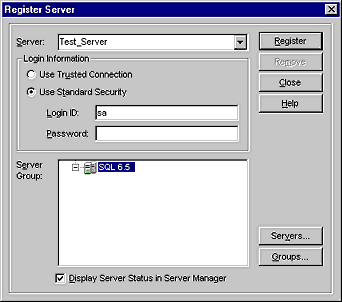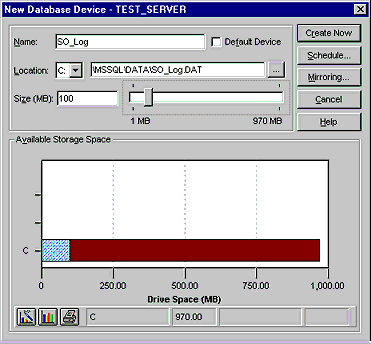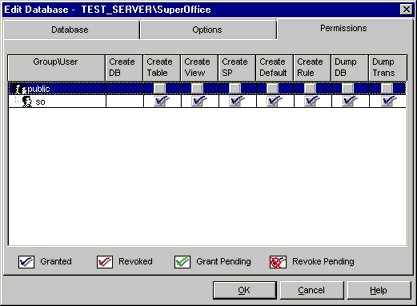|
Appendix B - Configure the SQL Server
When you have installed the server you can either restart the
server or manually start the SQL-Server. This is done by the Services
entry in Control Panel. Start the "SQL Enterprise Manager" from
the "Microsoft SQL Server 6.5" program group. This is the program
for configuration of the SQL Server. When the Enterprise Manager
is started you will be prompted to register the server.
B.1 Register server

The server has to be named. The name could describe something
about what the server contains. To choose the right login approach
must be done according to your network strategy. If you choose
Trusted Connection the SQL-Server will use NT login accounts.
If you choose Standard Security you will have internal login accounts
in the server. The system administrator with blank as password
is the default administrator for the entire SQL Server.
B.2 Add new data devices
When you have installed the Server you have to decide how the
server should be organized. This is a important topic that we
cannot cover completely in this document. But we have experienced
that one thing is very important to achieve best possible performance
on the server. That is to divide data and log into separate data
devices. These should be stored on separate disks with separate
disk I/O controllers.
You can create new data devices or use existing. If you want to
make it easier to maintain the server it's recommended to keep
all SuperOffice data in a separate devices. Devices that no other
logical databases uses. This will make it easier to administrate
users and do backup / recovery operations.
How to add new data devices: Right click the Database Devices folder in the browser and choose
New Device. Apply information about name, location and size. The
size can be changed later if the database device is filled up.
Use descriptive names likes SO_Data and SO_Log.

The size of the log device should be at least 10% of the data
device.

B.3 Add new database
When you have established data devices you must add a logical
database on these data devices. The logical database is where
data is stored.
How to add a new database: Right click on the Databases folder in the browser and choose
"New database". Give the database a describing name and place
it on the data devices you prefer.

B.4 Add the SO user
SuperOffice uses a special user called "SO" for several purposes.
This special user has to be created before the SuperOffice installation
procedure is run.
How to add the SO user:
- Choose the Manage menu
- Choose the Logins sub menu
- Complete the information like this:

User name: SO
Password: SOSOSO
- Give the SO user rights to the SuperOffice database.
Right click on the SuperOffice database in the browser.
Choose Edit.
Choose Permissions. Complete the dialog as this:

|